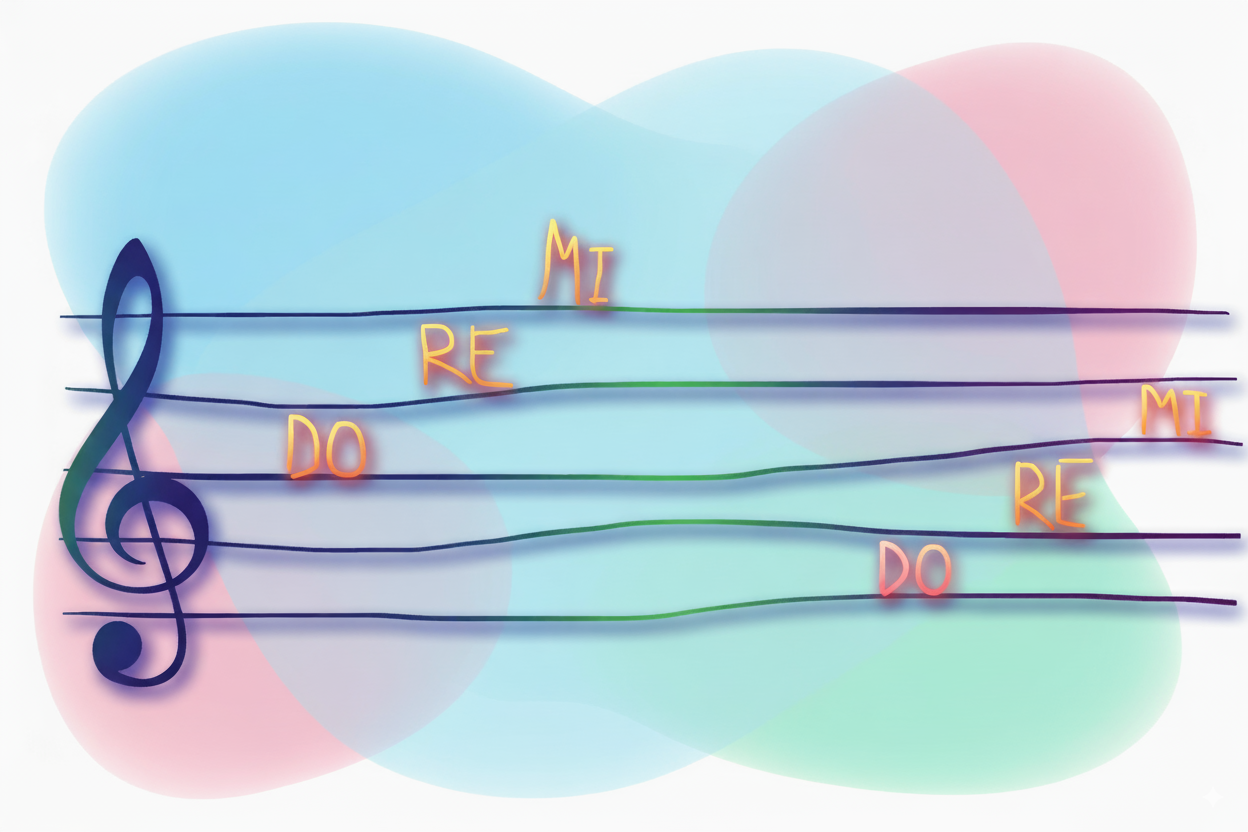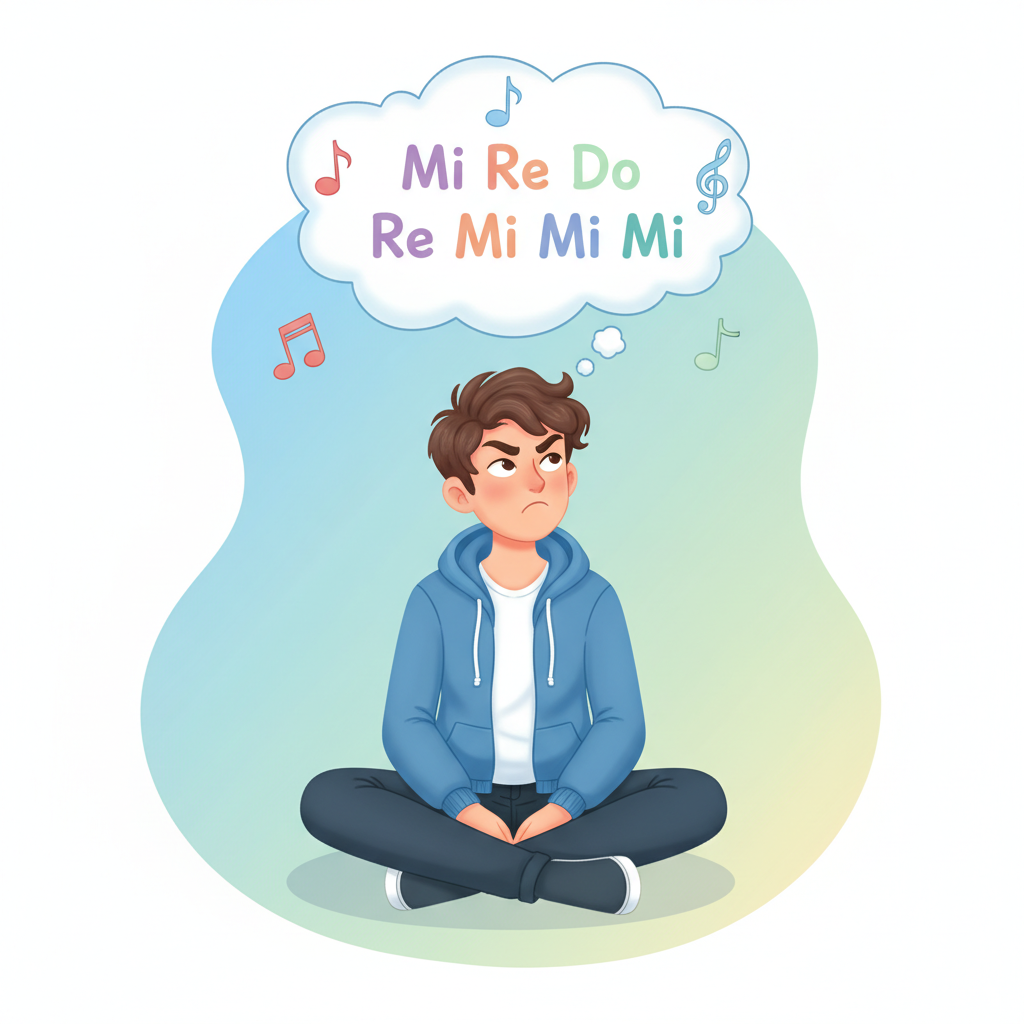How Tonic Sense Makes You a Better Musician
Welcome to the theory behind the training. The exercises in Tonic Sense are carefully designed to develop a set of interconnected aural skills that are fundamental to musicianship. Let's break down the core concepts.
What is Relative Pitch?
Definition
Relative Pitch is the ability to identify a note by hearing its relationship to another, known note (the tonic).
Do Re Mi on the Staff

Think of it like navigating a city:
🎯 Perfect Pitch
Like a GPS—they know the absolute address of every location
🏠 Relative Pitch
Like a local who knows how to get anywhere from their "home"
In music, "home" is the tonic. With relative pitch, you can hear that a melody is moving from home (1, or Do) up to the fifth (5, or So), without needing to know that the key is C Major and the notes are C and G.This skill is the foundation for playing by ear, improvising, and understanding music on a deeper level.
The Tonic Sense Method in Action
Here's how relative pitch works in practice. Follow the journey from hearing a familiar song to playing it in any key.
Sing
Start by singing a familiar melody like "Mary Had a Little Lamb." Your brain naturally recognizes the tune and the relationships between the notes, even without thinking about theory.


Internalize
Transform the melody into solfege syllables: "Mi Re Do Re Mi Mi Mi". Now you're thinking in terms of scale degrees and relationships, not absolute pitches.
Apply
Play the melody on piano in E Major. Your hand finds G# (the Mi in E Major) and plays the exact same relationships you internalized, just transposed to a new key.
🎹 Hand position shown: Starting on G# (Mi in E Major)

This is the power of relative pitch: once you internalize the relationships, you can play any melody in any key.The same "Mi Re Do Re Mi Mi Mi" works whether you start on C, G#, or any other note!
The Three Pillars of Aural Training
Tonic Sense focuses on three proven methods for developing relative pitch.
Solfege Syllables (Movable Do)
Solfege assigns a unique syllable to each note of the scale (Do, Re, Mi, Fa, So, La, Ti). We use the Movable Do system, which means Do is always the tonic, no matter what key you're in. This is incredibly powerful because it trains your ear to recognize the function and feeling of each scale degree. You learn that Ti always feels like it's pulling you back home to Do, and that the Fa to Mi movement is a "half-step down."
Numeric Scale Degrees
Identifying scale degrees by number (1,2,3,4,5,6,7) is a more abstract and analytical way to develop the same skill. This method is the key to unlocking music theory. When you see that a major chord is built from 1 - 3 - 5, you can instantly build it in any key. When you hear a 1 - 4 - 5 - 1 chord progression, you'll recognize it in thousands of songs.
Instrument Application (Piano Keyboard)
Aural skills are only useful if you can apply them. The piano keyboard is the ideal tool for visualizing music theory. Our piano exercises close the loop between your mind, your ear, and your hands. You'll practice hearing a melody and immediately finding it on the keyboard in the specified key, solidifying your ability to transpose and play what you hear.
The Power of Repetition: Why Practice Makes Permanent
Ear training is not just an intellectual exercise—it's a physical skill that requires building new neural pathways in your brain.
Just like learning to shoot a basketball or play a guitar riff, recognizing intervals and scale degrees requires your brain to form strong, automatic connections. This only happens through repeated, deliberate practice.
One and Done?
Doing a lesson once might introduce you to a concept, but it won't solidify the skill. Your brain needs multiple encounters with the same pattern to create lasting recognition.
Repeated Exposure
Each time you repeat a lesson, you strengthen the mental pathways. What once required intense concentration becomes automatic and effortless—true fluency.
🔄How Tonic Sense Supports Your Repetition Practice
Track Your Repetitions: On your "My Learning" dashboard, you can see exactly how many times you've completed each lesson, helping you identify which skills need more reinforcement.
Smart Suggestions: The dashboard highlights lessons you've already done that would benefit from another round, ensuring your practice is focused where it matters most.
Build Deep Fluency: Returning to lessons over time with spaced repetition helps move knowledge from short-term awareness to long-term mastery.
Remember: You're not just learning facts—you're training your ear to instantly recognize patterns.Embrace repetition as the path to true musical fluency. Each time you return to a lesson, you're getting closer to playing what you hear, effortlessly.
Core Skills You Will Develop
🎵 Scale Degree Recognition
The ability to name the function of any note you hear within a key (e.g., "That's the 5th," or "That's So").
🧠 Tonal Memory
Your musical short-term memory. This skill allows you to hear a phrase, hold it in your head, and then play it back accurately without losing your place. Melodic dictation is the classic exercise for building this skill.